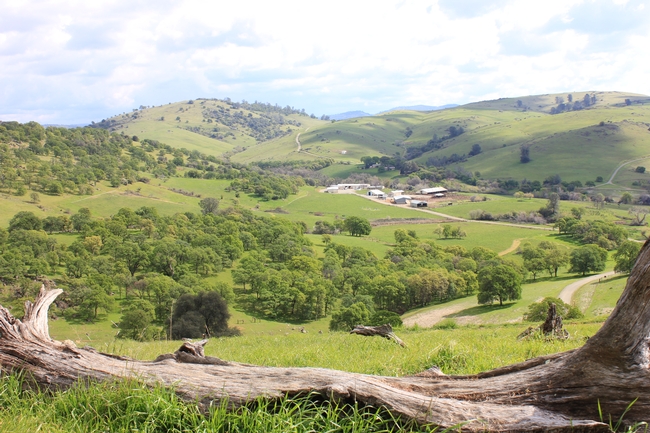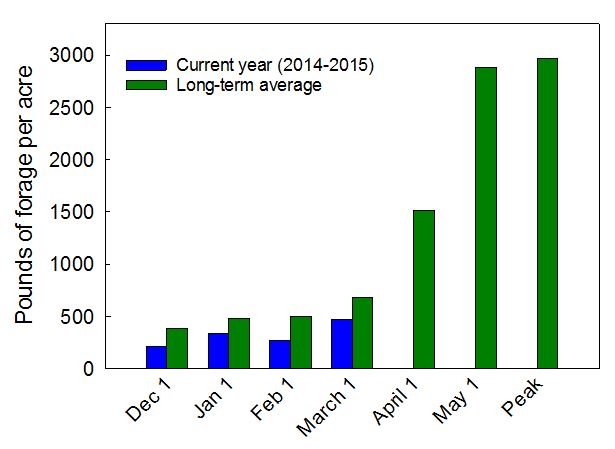
We went through January in a precarious state with only about 270 lbs of forage per acre on the ground by February 1st when normally we should have about 500 bs of forage per acre by February 1st, so the brief wet and warm period we had in early February (precipitation totals) did help us reduce the forage deficit. March is our second largest forage production month where on average we grow more than 800 lbs per acre ac so we need to see close to 1000 lbs per acre of growth in March to get us back on track for the season.
While March 1st is an indicator of how well things were (or not) for the winter months, April 1st has always been a better gauge as to where we might end up at peak standing crop. The table below shows several years that had similar forage values on March 1st but ended up with large differences in forage by the end of spring. For example in 1979-1980 we started March at 500 lbs per acre and by the end of spring ended up with total forage production that was 56% of average while in 2001-2002 we started March at 447 lbs per acre and by the end of spring had forage production that was 93% of average. Last year, with the severe drought, we started March with 400 lbs of forage on the grounded and by the end of spring forage production was about 77% of average.
It is difficult to predict how this season will turn out as of today, but March is not looking too encouraging in the way of predicted precipitation for the month. While this weekend's 0.21 inches of precipitation was a welcome site we are going to need more than a few thunderstorms to get us back on track. Our next round of data will come out shortly after April 1st and will give us a more definitive idea of where the rest of the growing season may be headed. For more information on long-term weather and forage production trends in the Sierra Foothills click here. If you are interested in getting more information managing through low rainfall/forage years SFREC has a number of videos and publications that explore this topic.
To get more information about how producers can benefit from forage production data, click here.

